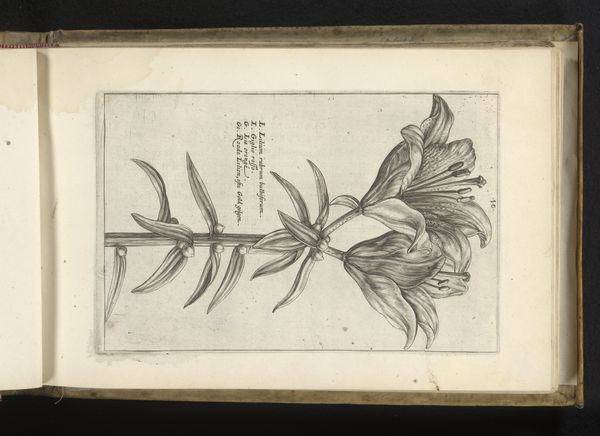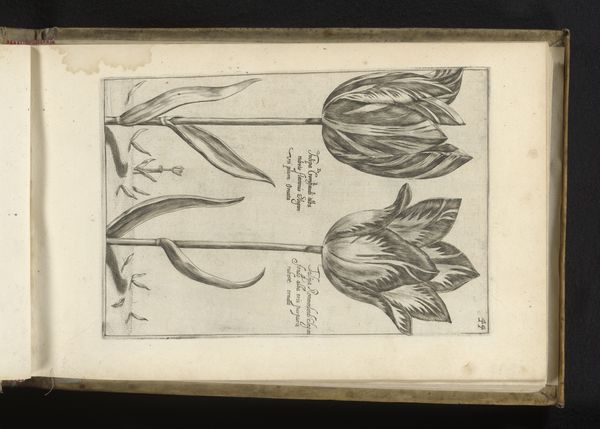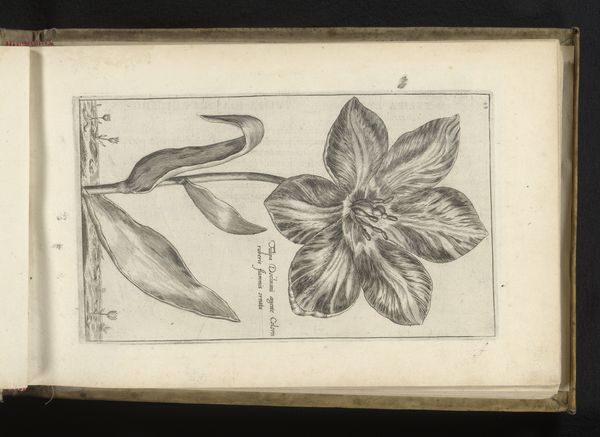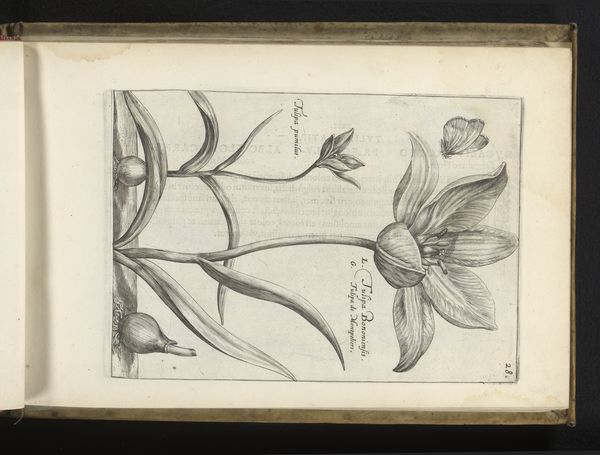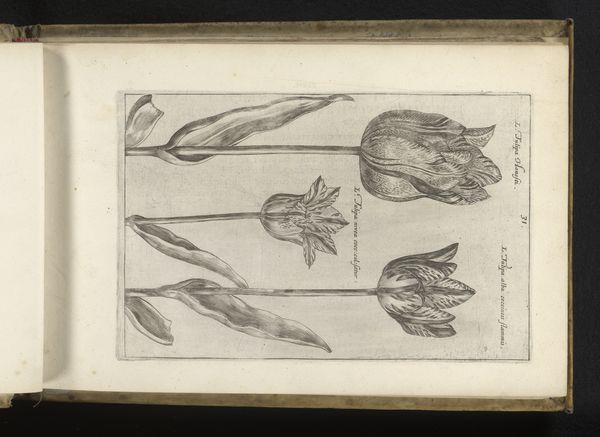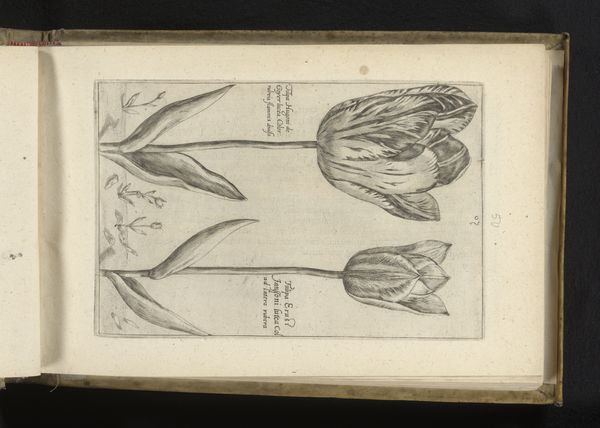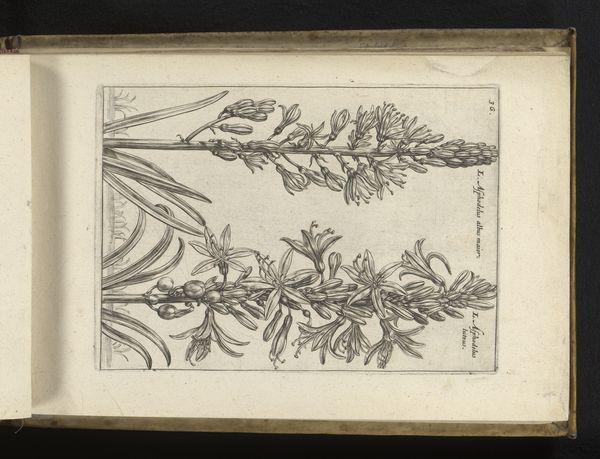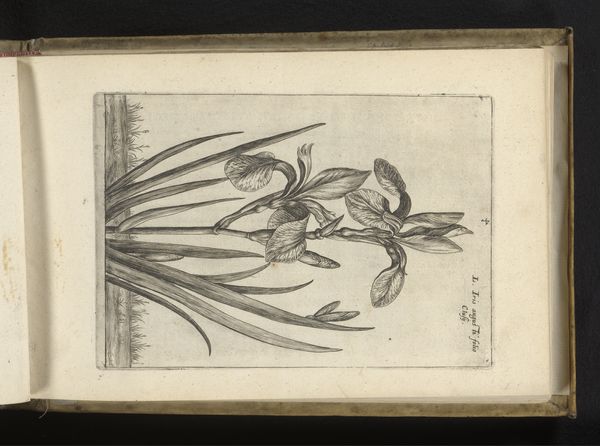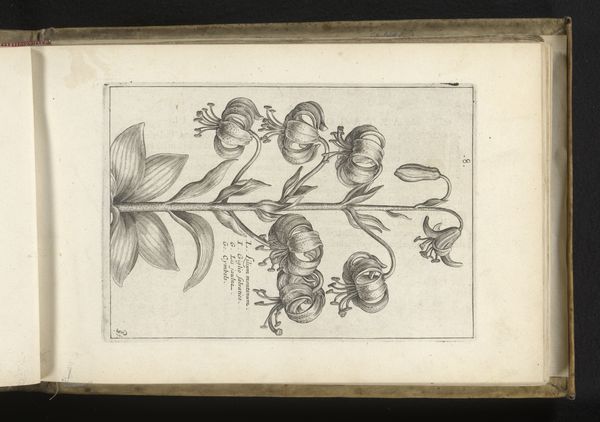
drawing, print, ink, engraving
#
drawing
#
baroque
# print
#
flower
#
ink
#
pen-ink sketch
#
pen work
#
engraving
Dimensions: height 217 mm, width 132 mm
Copyright: Rijks Museum: Open Domain
Editor: So, this is Crispijn van de Passe's "Meerkleurige tulpensoort" from 1617. It’s a drawing and engraving using ink. There's something almost scientific about its precise rendering, yet I'm drawn to the flower's complex, swirling petals. What do you see in this piece? Curator: The first thing I notice is the tulpensoort itself: The tulip, especially in 17th-century Holland, wasn’t merely a flower; it was a symbol, an emblem of status, desire, and the volatile nature of wealth. This botanical drawing also includes curious symbols such as the decorative ring supporting the stem, and the bee hovering near the flower's head. Editor: A status symbol? Like a luxury car today? Tell me more. Curator: Exactly. During the Dutch Golden Age, "tulip mania" gripped the nation. Rare bulbs commanded exorbitant prices, a frenzy fueled by speculation and social aspiration. But consider this: why choose a tulip, among all possible flora, to become a shorthand for not only economic status but something deeply ephemeral and beautiful? Do you find any cultural significance to its ephemeral qualities? Editor: The fleeting nature of beauty... and wealth. Like a memento mori? Curator: Precisely. Van de Passe's meticulous detail—every vein on the leaf, the intricate markings of the petals, suggests a desire to capture something precious before it vanishes. Consider also the very controlled hand needed to engrave and publish such prints at scale, when new forms of commerce also depended on printing presses and illustrated broadsides. It all reinforces the tulip as a potent emblem within a specific cultural and economic landscape. Editor: So, it’s more than just a pretty flower; it’s a symbol of a specific moment in history, with echoes that still resonate. Curator: Indeed. This drawing invites us to contemplate the transience of beauty and the sometimes-irrational allure of the rare and valuable. It is interesting to also note that these natural phenomenon of beautifully rendered tulips may not exist anymore, if this rendering survives instead! What will that mean to the world as it moves into the future? Editor: I’ll definitely be thinking about that next time I see a tulip!
Comments
No comments
Be the first to comment and join the conversation on the ultimate creative platform.

